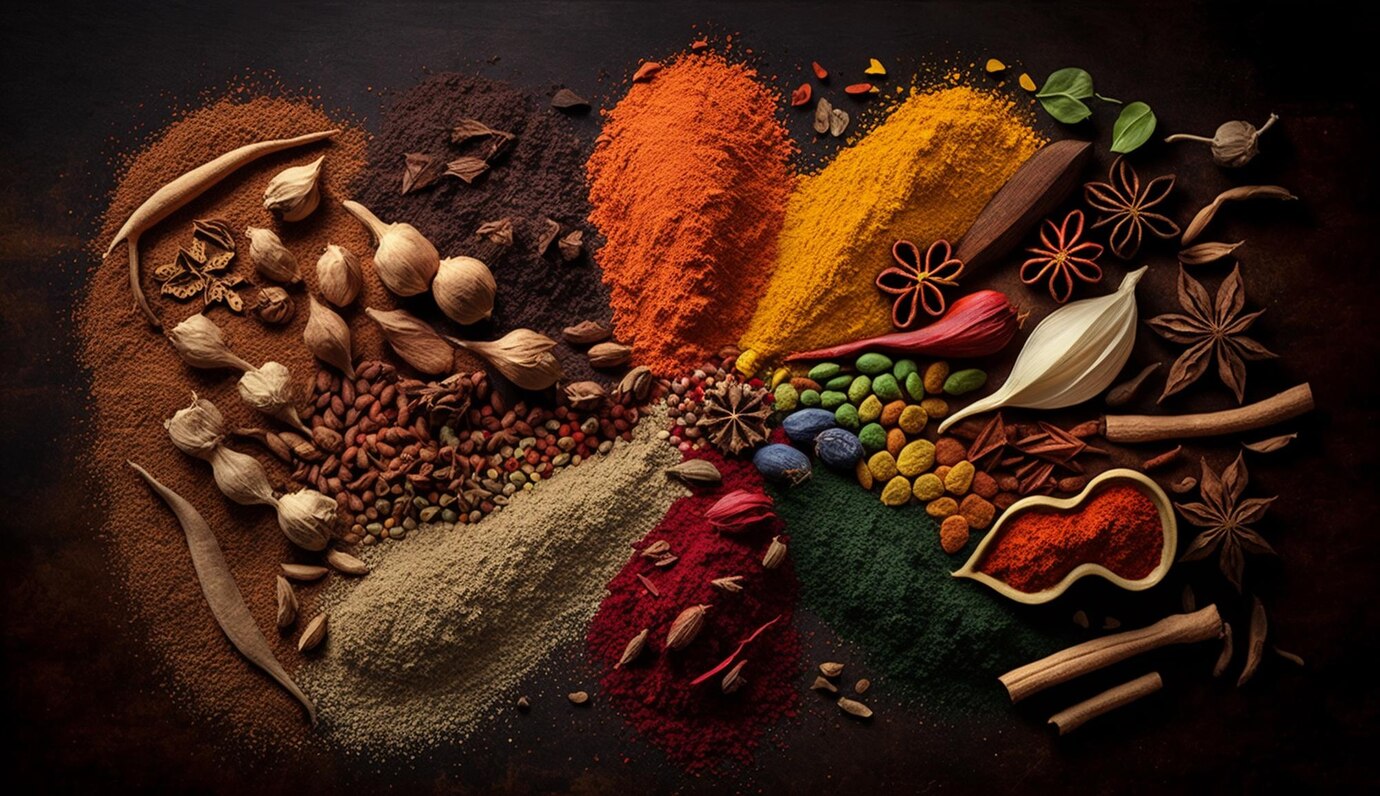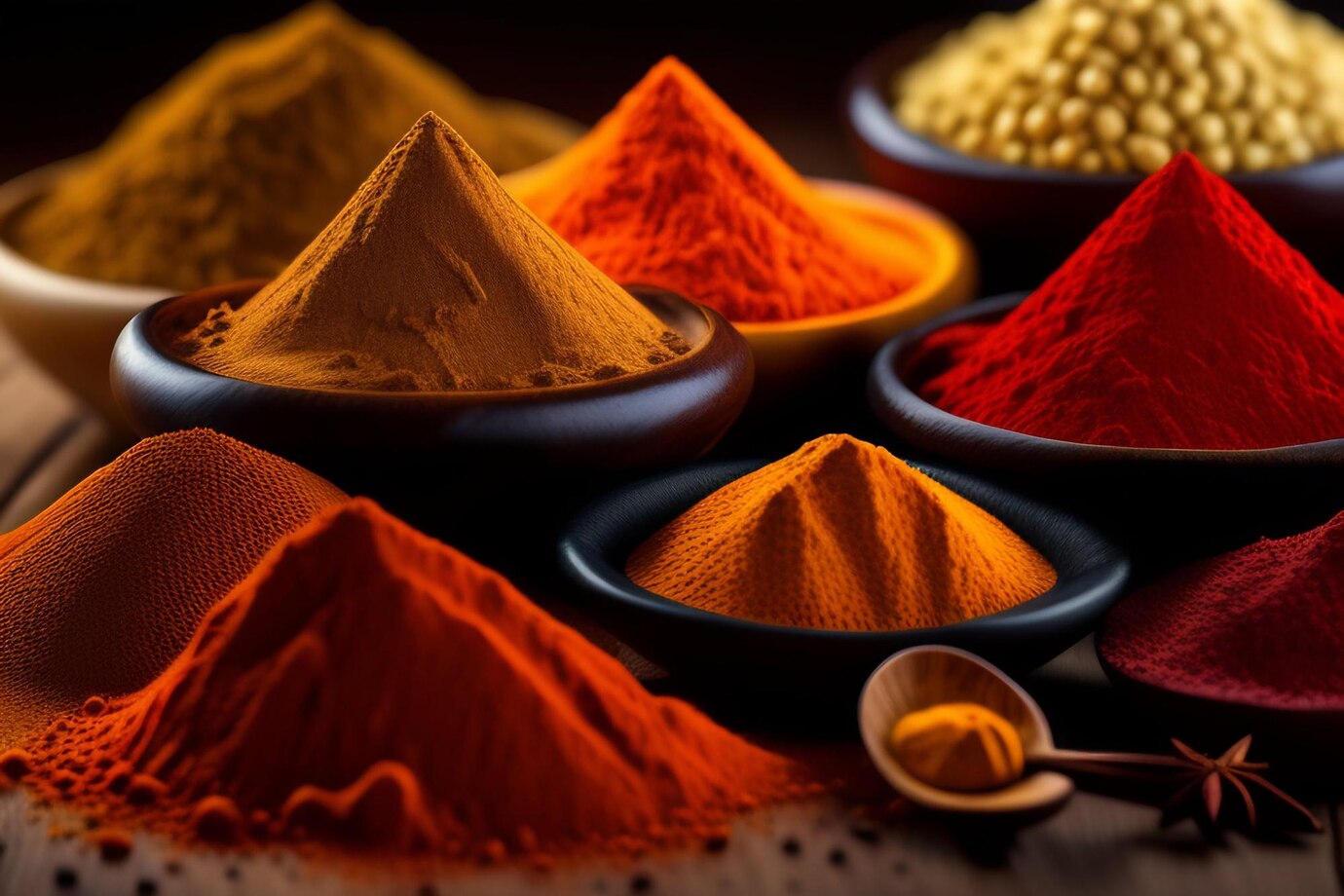Indian spices : Global Power of Indian Spices
The aromatic allure of Indian spices has transcended borders, leaving an indelible mark on global cuisine and culture. In this exploration of the power of Indian spices, we delve into their historical significance, health benefits, and the transformative role they play in shaping culinary experiences worldwide.
Historical Significance: Spice Trade Routes and Global Influence
Indian spices have a storied history deeply intertwined with the spice trade routes that connected the East and West. The allure of spices such as black pepper, cardamom, cinnamon, and cloves fueled exploration and trade expeditions, shaping the course of history. The “Spice Route” became synonymous with cultural exchange, economic prosperity, and the global fascination with the aromatic treasures from India.
Culinary Treasures of India: A Symphony of Flavors
- Turmeric: Known for its vibrant yellow hue, turmeric is a staple in Indian cuisine. Beyond its culinary uses, turmeric holds a revered place in Ayurveda for its medicinal properties, including anti-inflammatory and antioxidant benefits.
- Cumin: With its warm and earthy flavor, cumin is a versatile spice used in various Indian dishes. It adds depth to curries, rice dishes, and spice blends, contributing both aroma and taste.
- Coriander: Both the seeds and fresh leaves of coriander are widely used in Indian cooking. The seeds lend a citrusy, warm flavor, while the fresh leaves, known as cilantro, add a burst of freshness to dishes.
- Cardamom: This fragrant spice, with its sweet and floral notes, is a key player in both sweet and savory dishes. Cardamom-infused chai, biryanis, and desserts showcase its versatile profile.

Health Benefits: Beyond Flavor to Wellness
Indian spices are not only culinary stars but also offer a plethora of health benefits:
- Anti-Inflammatory Properties: Turmeric’s active compound, curcumin, has potent anti-inflammatory effects, contributing to overall well-being.
- Digestive Aid: Spices like cumin and fennel are known for their digestive properties, aiding in digestion and reducing bloating.
- Antioxidant Rich: Many Indian spices, including cloves and cinnamon, boast antioxidant properties that combat oxidative stress and promote cellular health.
Cultural Significance: Spices in Indian Rituals and Traditions
Spices hold a sacred place in Indian rituals and traditions. From the aromatic incense in religious ceremonies to the symbolic use of spices in traditional medicine, their cultural significance extends beyond the culinary realm.
Spice-Infused Recipes: A Culinary Symphony
- Garam Masala: This aromatic spice blend, often containing cumin, coriander, cardamom, and cinnamon, elevates the flavor profile of various dishes.
- Chai Masala: The quintessential Indian spiced tea, chai masala, combines spices like cardamom, cinnamon, and cloves for a comforting and aromatic beverage.
- Tandoori Masala: A blend of spices like cumin, coriander, and paprika, tandoori masala imparts the smoky and flavorful essence to tandoori dishes.
Spice Industry Impact: Driving Economic Growth
The global demand for Indian spices has fueled a thriving spice industry, contributing significantly to India’s economic growth. The country remains a leading exporter of spices, showcasing the economic power that stems from these aromatic treasures.
Conclusion: A Flavorful Legacy
The power of Indian spices extends far beyond the boundaries of the kitchen. From their historical significance in global trade to their diverse culinary applications and health benefits, India’s spices continue to captivate and enrich the world. As we savor the flavors of this spice odyssey, we celebrate the enduring legacy and cultural richness that these aromatic gems bring to the global palate.


